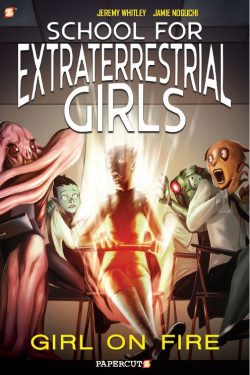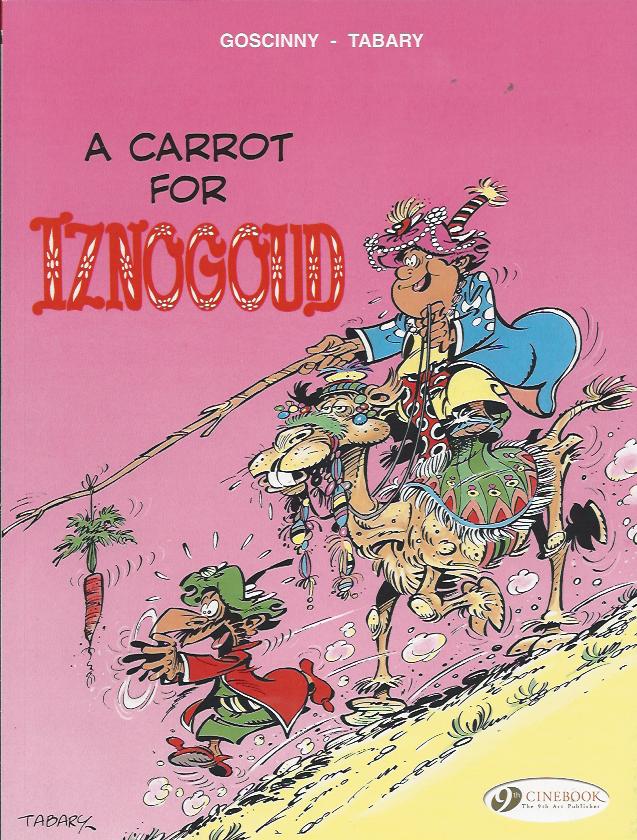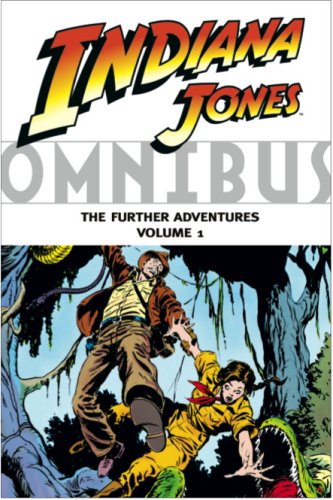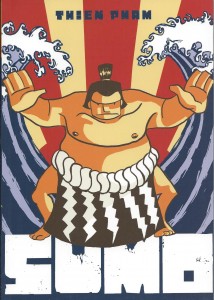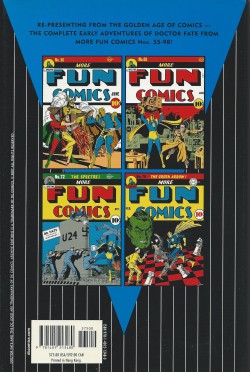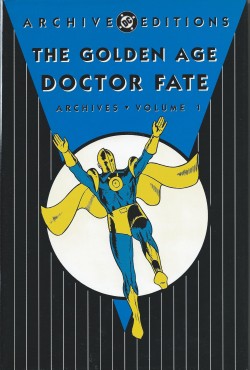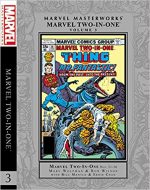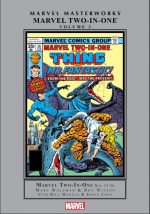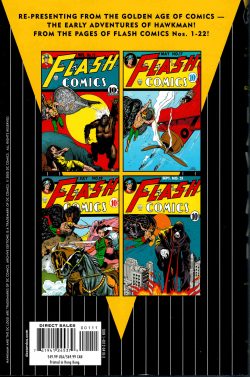
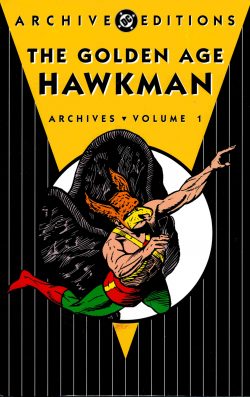
By Gardner F. Fox, Dennis Neville, Sheldon Moldoff & various (DC Comics)
ISBN: 978-1-4012-0418-1 (HB)
Although one of DC’s most long-lived and certainly their most visually iconic character, the various iterations of Hawkman have always struggled to find enough of an audience to sustain a solo title. From his beginnings as one of the assorted B-features in Flash Comics (the others being Cliff Cornwall, The King, The Whip and Johnny Thunder), all adding lustre to the soaraway success of the eponymous speedster at the helm of the comic book, Winged Wonder Carter Hall has struggled through assorted engaging, exciting but always short-lived reconfigurations.
Over decades from ancient hero to re-imagined alien space-cop and post-Crisis on Infinite Earths freedom fighter, or the seemingly desperate but highly readable bundling together of all previous iterations into the reincarnating immortal berserker-warrior of today, the Pinioned Paladin has performed exemplary service without ever really making it to the big time.
Where’s a big-time movie producer/fan when you need one?
Created by Gardner Fox & Dennis Neville, Hawkman premiered in Flash Comics #1 (cover-dated January 1940) and stayed there, growing in quality and prestige until the title died, with the most celebrated artists to have drawn the Feathered Fury being Sheldon Moldoff and Joe Kubert, whilst a young Robert Kanigher was justly proud of his later run as writer.
Together with his partner Hawkgirl/Hawkwoman, the gladiatorial mystery-man countered fantastic arcane threats and battled modern crime and tyranny with weapons of the past for over a decade before vanishing with the bulk of costumed heroes as the 1950s dawned.
His last appearance was in All Star Comics #57 (1951) as leader of the Justice Society of America, after which the husband-and-wife hellions were revived and re-imagined nine years later as Katar Hol and Shayera Thal of planet Thanagar.
That was thanks to Julie Schwartz’s crack creative team Gardner Fox & Joe Kubert – a space-age interpretation which even survived 1985’s winnowing Crisis on Infinite Earths. Their long career, numerous revamps and perpetual retcons ended during the 1994 Zero Hour crisis, but they’ve reincarnated and returned a couple of times since then too…
However, despite being amongst DC’s most celebrated and picturesque strips over the years, Hawkman and Hawkwoman always struggled to sustain sufficient audience to save their numerous solo titles.
This spectacular deluxe hardcover re-presentation of the formative years (collecting appearances from Flash Comics #1-22 spanning January 1940 to October 1941) begins with a fond reminiscence by artist Moldoff in the ‘Foreword’ before the magic begins as it should with ‘The Origin of Hawkman’ by Fox & Neville.
In his first epochal episode, dashing Carter Hall is a playboy scientific tinkerer and part-time archaeologist with a penchant for collecting old, rare weapons, whose dormant memory is unlocked by an ancient crystal dagger purchased for his collection. Through dreams the dilettante realises that once he had been Prince Khufu of ancient Egypt, who was murdered with his lover Shiera by Anubis’ High Priest Hath-Set. Moreover, with his newly returned memories, Hall realises that the eternal struggle is primed to play out once more…
As if pre-destined, he bumps into the equally reincarnated and remembering Shiera Sanders just a terrifying electrical menace turns New York City’s Subway into a killing field. The new couple surmise the deadly Doctor Hastor is their ancient nemesis reborn and, fashioning an outlandish uniform and anti-gravity harness of mystic Egyptian “Ninth Metalâ€, Hall hunts the deranged electrical scientist to his lair. He’s just in time to save mesmerised Shiera from a second death-by-sacrifice and mercilessly ends the cycle – at least for now…
Flash #2’s, ‘The Globe Conquerors’ concentrated on fantastic science as Hall and Shiera tackle a modern Alexander the Great who builds a gravity-altering machine in his ruthless quest to conquer the world, whilst ‘The Secret of Dick Blendon’ in #3 sees “The Hawk-Man†expose a wicked scheme by insidious slavers who turn brilliant men into zombies for profit, to gather riches and to find the secret of eternal life.
Moldoff debuted as artist in Flash Comics #4, illustrating a splendidly barbarous thriller wherein the Winged Warrior clashes with ‘The Thought Terror’; a sinister mesmerist enslaving the city’s wealthy citizens, before ‘The Kidnapping of Ione Craig’ in #5 pits the crime-fighting phenomenon against “Asiatic†cultists led by legendary assassin Hassan Ibn Saddah. The killers are determined to stop a pretty missionary and secret agent from investigating distant Araby…
Moldoff has received overly unfair criticism over the years for his frequent, copious but stylishly artistic swipes from newspaper strips by master craftsmen Alex Raymond and Hal Foster in his work of this period, but one look at the stunning results here as the feature took a quantum leap in visual quality should silence those quibblers for good…
Maintaining the use of exotic locales, the story extended in issue #6 as Hall and Ione struggle to cross burning Saharan sands to the African coast before defeating Arab slavers and their deadly ruler ‘Sheba, Queen of the Desert’…
Issue #7 further explored the mystical and supernatural underpinnings of the strip which easily lent themselves to spooky tales of quasi-horror and barbaric intensity. “The Eerie Unknown†and deluded dabblers in darkness were much-used elements in Hawkman sagas, as seen in ‘Czar, the Unkillable Man’ wherein the Avian Avenger, back in the USA and reunited with Shiera, clashes with a merciless golem animated by a crazed sculptor aiming to get rich at any cost.
Issue #8 featured another deranged technologist as ‘The Sunspot Wizard’; Professor Kitzoff alters the pattern and frequency of the solar blemishes to foment riot, madness and chaos on Earth… until the Winged Wonder intervened, after which in ‘The Creatures from the Canyon’ Hawkman foils aquatic invaders living in the deeps 5,000 feet below Manhattan Island who have decided to expand their ancient empire upwards…
Bidding for an old firearm at an auction in #10, Hall is inexorably drawn into a murder-mystery and the hunt for a lost Colorado goldmine in ‘Adventures of the Spanish Blunderers’, before ‘Trouble in Suburbia’ manifests after a hit-and-run accident draws plucky Shiera into a corrupt and convoluted property-scam. Boyfriend Carter Hall is quite prepared to stand back and let her deal with the villains – even if Hawkman does exert a little surreptitious brawn to close the case…
Another murderous scam involves an old High Society chum as ‘The Heart Patient’ reveals how a pretty gold-digger and rogue doctor serially poison healthy young men and fleece them for a cure, whilst in #13 ‘Satana, the Tiger Girl’ preys on admirers for far more sinister reasons: pitting Hawkman and Shiera against scientifically hybridised killer-cats…
 ‘The Awesome Alligator’ then sees an elder god return to Earth to inspire and equip a madman in a plot to conquer America, with ancient secrets and futuristic super-weapons. None of those incredible threats could withstand cold fury and a well-wielded mace, however…
At this time the Pinioned Paladin usually dispatched foes of humanity with icy aplomb and single-minded ruthlessness, and such supernatural thrillers as #15’s ‘The Hand’ gave Fox & Moldoff ample scope to display the reincarnated warrior’s savage efficiency when he tracks down a sentient severed fist which steals and slaughters at its inventive master’s command, whilst ‘The Graydon Expedition’ in #16 reinforces the hero’s crusading credentials after Shiera goes missing in Mongolia, and the Winged Wonder undertakes a one-man invasion of a fabulous lost kingdom to save her.
In Flash Comics #17, ‘Murder at the Opera’ puts the bold birdman on the trail of an arcane Golden Mummy Sect with a perilously prosaic origin and agenda, whilst #18 finds him investigating skulduggery in the Yukon as Shiera rushes north to offer aid to starving miners during ‘The Gold Rush of ’41’.
Evidently capable of triumphing in any environment or milieu, Hawkman next thwarted deranged physicist Pratt Palmerin #19, when that arrogant savant attempts to become the overlord of crime using his deadly ‘Cold Light’. In #20, ‘The Mad Bomber’ finds the Avian Ace allied with a racketeer to stop mad scientist Sathan from destroying their city with remote-controlled aerial torpedoes, after which Hawkman is forced to end the tragically lethal rampage of an alien foundling raised by a callous rival for Shiera’s affections in ‘Menace from Space’…
This first high-flying archive compilation concludes with October 1941’s Flash Comics #22 and ‘The Adventure of the Killer Gang’ as headstrong Shiera witnesses a bloody hijacking and determines to make the bandits pay. Although she again helps Hawkman deal with the murderous vermin as a civilian here, big changes were in store for the feisty, capable heroine…
Already in All Star Comics #5 (July 1941) she had first worn wings and a costume of her own, and in Flash Comics #24 (December 1941) she would at last become an equal partner in peril and fully-fledged heroine: Hawkgirl… but sadly that’s a tale for another volume…
Exotic, engaging and fantastically inviting, these Golden Age adventures are a true high-point of the era and still offer astonishing thrills and chills. When all’s said and done it’s all about the heady rush of raw adventure, but there’s also a fabulous frisson of nostalgia here to wallow in: seeking to recapture that magical full-sensorium burst of smell and feel and imagination-overload that finds kids at a perfect moment and provokes something visual and conceptual that almost literally blows the mind…
We re-read stories hoping to rekindle that instantly addictive buzz and constantly seek out new comics desperately hoping to recapture that pure, halcyon burst, and these lost mini-epics are phenomenally imbued with everything fans need to make that breathtaking moment happen. Hopefully DC will realise that soon and revive these compelling compulsive collections: either in solid form or at least in some digital editions…
© 1940, 1941, 2005 DC Comics. All Rights Reserved.




